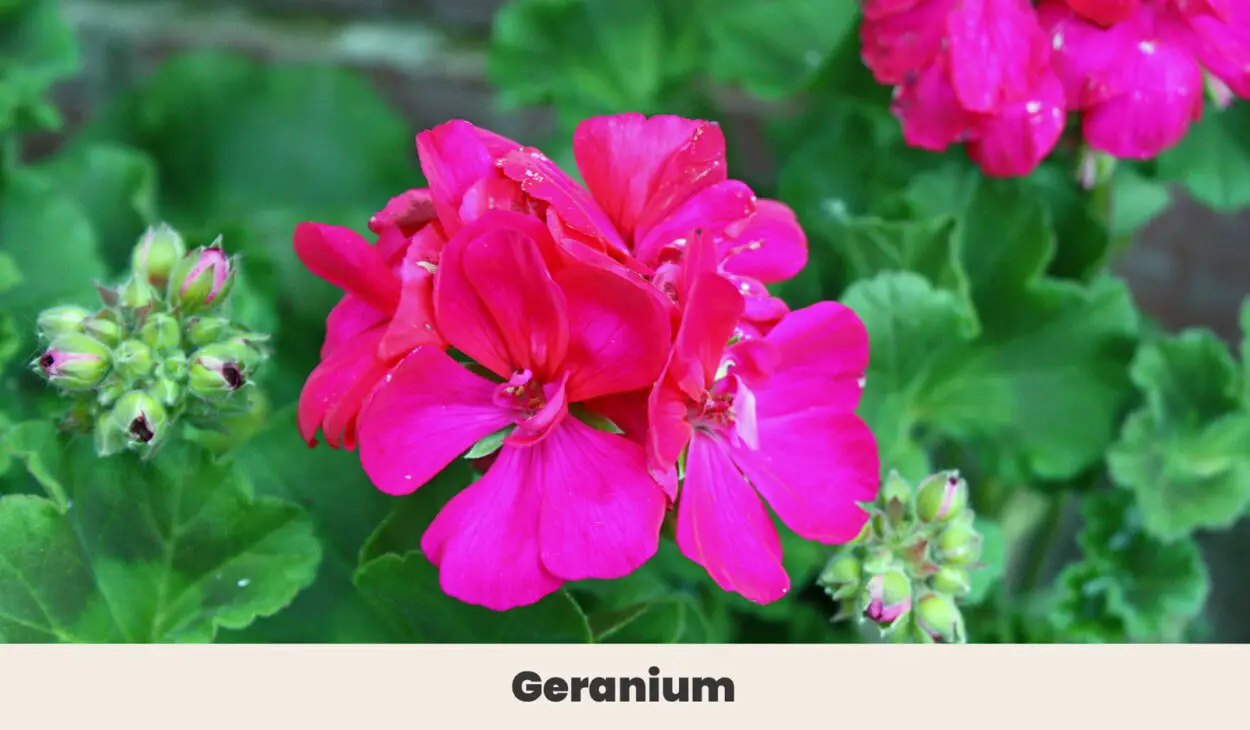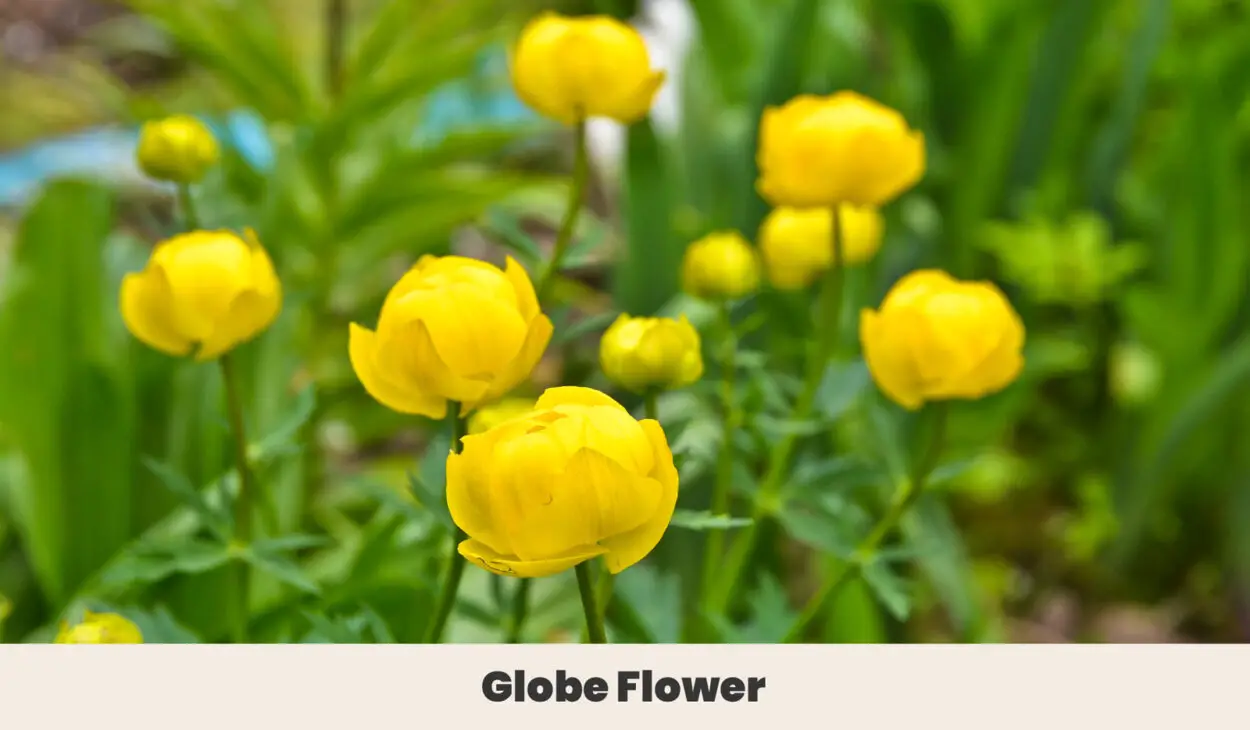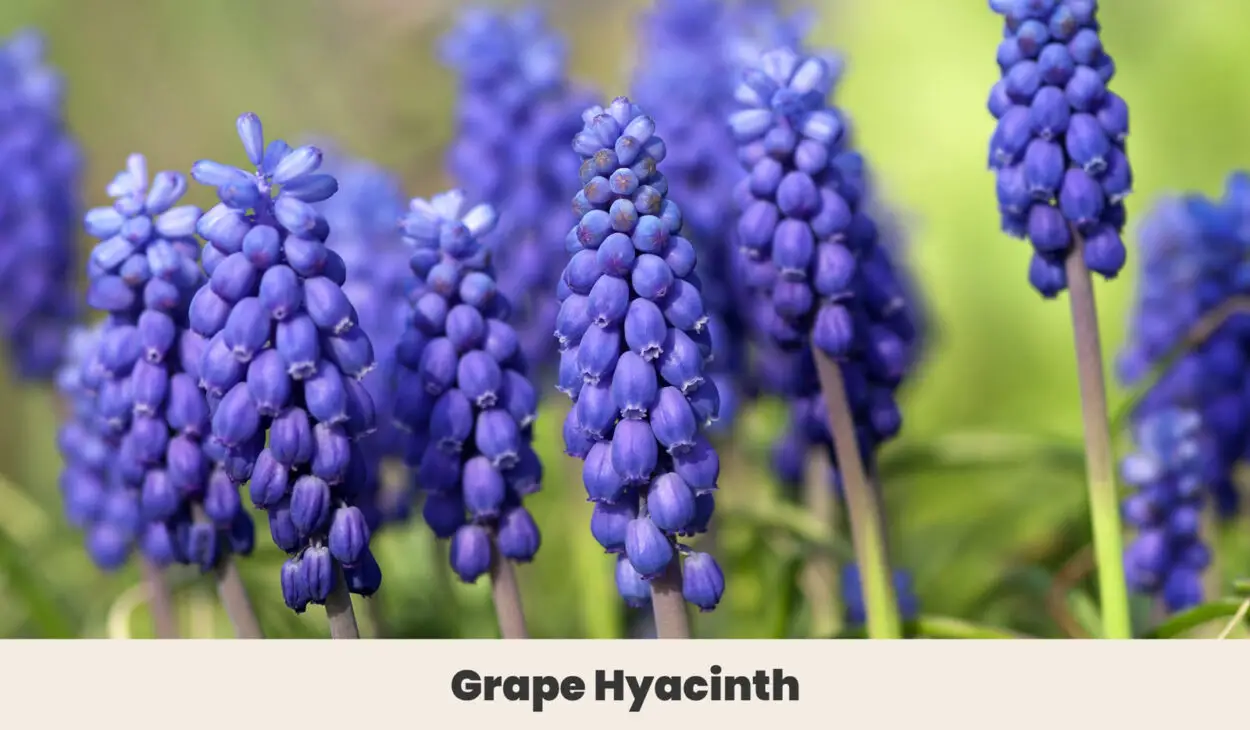11 Gorgeous Flowers that Start with G + Growing Guide Charts

This post follows our research editorial guidelines.

It’s grand to grow gorgeous, glorious blooms that glorify my garden. They greet the gardener with glowing grandeur and guide good bugs to generous gifts of nectar. It’s gladdening to gaze at their grace and grounding goodness.

I’ve been going crazy over my most gregarious garden goodies, gawking at my favorite flowers in alphabetical order. It’s time to get a gander at the letter G!
Quickly Find Flowers That Start With G
1. Geranium (Geranium albanum)

Also known as the Albanian cranesbill, this form of geranium is a fast-spreading ground cover that produces delicate pink and mauve blossoms. It rarely reaches more than a foot high, preferring to sprawl out abundantly along the ground instead.
This growth habit makes it a good choice for rock gardens and at the edges of garden beds, where it will tumble playfully among the stones.
| Botanical Name: | Geranium albanum |
| Growth Rate: | Moderate |
| Native Range: | The Caucasus and Northern Iran |
| Hardiness Zones: | 5 to 8 |
| Soil Needs: | Moist, organically rich soils of most types |
| Exposure: | Full sun |
| Blooming Period: | Summer to fall |
| Water needs: | Moderate |
2. Globe Flower (Trollius europaeus)

The globe flower lives up to its name with plump, spherical flowers in vivacious shades of lemony yellow. They’re a bog blossom, thriving in damp low fertility soils that may prove challenging for other flowering plants.
It’s also a perennial with the ability to tough out sub-zero temperatures. As a result, they can be a real lifesaver for those of us stuck with soggy soil and cold winters.
| Botanical Name: | Trollius europaeus |
| Growth Rate: | Moderate |
| Native Range: | Europe and |
| Hardiness Zones: | 3 to 7 |
| Soil Needs: | Moist to wet soils of most types |
| Exposure: | Full sun to partial shade |
| Blooming Period: | Late spring to early summer |
| Water needs: | Moderate to high |
3. Globe Amaranth (Gomphrena globosa)

Globe amaranth always puts me in mind of a pom-pom, with dainty spherical flowers an inch or two across. They’re vibrantly colored, ranging from white to pink and purple. Their flowers are long-lasting and bright, popular with butterflies and bees during their astonishingly long blooming season.
They’ll often pop out fresh buds from summer right up to the first frost, though many growers cut the flowers to dry as autumn approaches. They’ll keep their vibrancy even once dried.
| Botanical Name: | Gomphrena globosa |
| Growth Rate: | Fast |
| Native Range: | Southwestern United States and Mexico |
| Hardiness Zones: | 2 to 11 |
| Exposure: | Full sun |
| Blooming Period: | Summer to winter |
| Water needs: | Moderate |
4. Gerbera Daisy (Gerbera jamesonii)

Gerbera daisies are a perky classic. They feature bright round flowers in any color imaginable, ranging from white and cream to deep bronzes and scarlet. The single or semi-double forms are most common, but some hybrids produce double-petalled flowers or even spindly, spidery blossoms.
Many folks grow them as an annual, but with care and a bit of warmth, they’ll perform as an annual, blooming year after year.
| Botanical Name: | Gerbera jamesonii |
| Growth Rate: | Moderate |
| Native Range: | Southeastern Africa |
| Hardiness Zones: | 8a to 10b |
| Soil Needs: | Well-draining soils rich in organic matter |
| Exposure: | Full sun to partial shade |
| Blooming Period: | Summer to fall |
| Water needs: | Moderate |
5. Gentian Speedwell (Veronica gentianoides)

Sometimes called veronica, gentian Speedwell produces elegant spires flecked with many small flowers in shades of white, blue, or purple. Their nodding displays make them quintessential cottage garden residents.
It’s an excellent all-rounder that attracts useful insects like pollinating butterflies and bees and provides valuable nectar for hummingbirds almost all the way to winter.
| Botanical Name: | Veronica gentianoides |
| Growth Rate: | Moderate |
| Native Range: | The Caucasus and Central Asia |
| Hardiness Zones: | 4 to 7 |
| Soil Needs: | Moist, organically rich soils of most types |
| Exposure: | Full sun to partial shade |
| Blooming Period: | Late spring to early fall |
| Water needs: | Moderate |
6. Garden Phlox (Phlox paniculata)

Few American wildflowers are as charming as phlox. While it takes a bit more effort to grow than other natives, phlox outshines with thick heads of bright mauve flowers that are low-maintenance and deer resistant.
It’s increasingly popular, and while the original plant is purple, newer cultivars sport white, red, or even multicolored flowers. No matter what you choose, be prepared for Phlox to draw migrating birds and insects into your garden.
| Botanical Name: | Phlox paniculata |
| Growth Rate: | Moderate |
| Native Range: | Eastern United States |
| Hardiness Zones: | 4 to 8 |
| Soil Needs: | Moist, organically rich soils. Will tolerate most types if drainage needs are met. |
| Exposure: | Full sun to partial shade |
| Blooming Period: | Late summer to fall |
| Water needs: | Moderate |
7. Grape Hyacinth (Muscari armeniacum)

It’s rare to find a flower as brightly blue as the grape hyacinth. This is a low-growing plant, no more than six inches high, and is known for sweet spires of tightly clustered bell-shaped flowers. They’re almost like a mass of miniature bluebells, a tiny treasure that loves to hide in cool, well-shaded grottoes and glades.
If left alone they’ll self-seed aggressively, and slowly spread to cover large areas with their softly scented flowers and long glossy leaves.
| Botanical Name: | Muscari armeniacum |
| Growth Rate: | Moderate |
| Native Range: | Southeastern Europe |
| Hardiness Zones: | 3 to 9 |
| Soil Needs: | Organically rich, moist but free-draining soils |
| Exposure: | Full sun to partial shade |
| Blooming Period: | Spring |
| Water needs: | Moderate |
8. Globe Thistle (Echinops spp.)

There are around 120 different species of globe thistle, found in Asia, Europe, and parts of tropical Africa. They’re an eye-popping plants, with spiky foliage and perfectly spherical flowers almost like dandelion seed heads.
They’re an excellent choice for xeriscape gardens, as they thrive in poor quality, sandy soils with very little water at all.
| Botanical Name: | Echinops spp. |
| Growth Rate: | Fast |
| Native Range: | Asia, Europe |
| Hardiness Zones: | 3 to 9 |
| Soil Needs: | Dry rocky or loamy soils |
| Exposure: | Full sun |
| Blooming Period: | Summer to early fall |
| Water needs: | Low, drought resistant once established |
9. Godetia (Clarkia amoena)

Godetia is also evocatively known as Herald of Summer, or Farewell to Spring. Unsurprisingly, this elegant flower appears at the tail end of spring, just as the summer really starts to set in.
This pink wildflower can be found all along the California coast, where it peppers roadsides and meadows alike. Like many wildflowers, it’s a critical food source for native insects, especially rare butterflies, and bees.
| Botanical Name: | Clarkia amoena |
| Growth Rate: | Fast |
| Native Range: | Western United States |
| Hardiness Zones: | 2 to 11 |
| Soil Needs: | Organically rich, well-draining soils of most types |
| Exposure: | Full sun to partial shade |
| Blooming Period: | Summer |
| Water needs: | Moderate |
10. Golden Chamomile (Cota tinctoria)

Golden by name and golden by nature, the golden chamomile produces abundant displays of vividly yellow flowers through the tail end of summer.
The rich hue is so vibrant that the blossoms are a traditional ingredient for a bright yellow dye used to color cloth. These days it’s more commonly used to bring its glorious luster to cottage gardens.
| Botanical Name: | Cota tinctoria |
| Growth Rate: | Moderate |
| Native Range: | Western Asia and Europe |
| Hardiness Zones: | 3 to 7 |
| Soil Needs: | Rocky, sandy low fertility soil with good drainage |
| Exposure: | Full sun |
| Blooming Period: | Summer to early fall |
| Water needs: | Low to moderate |
11. Golden Dew Drop (Duranta erecta)

You’ll be hard-pressed to find a faster and more vigorous grower than the golden dew drop. It forms a hardy shrub that can be cut to the ground and spring back, good as new, in a single season.
It produces loose clusters of purple blossoms ringed in white, scattered over the whole body of the plant. The name comes from the plant’s tiny golden fruit, no larger than a sequin, perfectly round and dewy. Be warned – while birds love them, they’ve been known to kill anything else who eats them.
| Botanical Name: | Duranta erecta |
| Growth Rate: | Fast |
| Native Range: | Tropical Americas |
| Hardiness Zones: | 9a to 11b |
| Soil Needs: | Most soil types |
| Blooming Period: | Spring to summer |
| Water needs: | Low to moderate |
Final thoughts
Graceful and gracious g flowers give goodness to gardeners and glee to gardens. I’m gladdened by their generosity and gentleness. Get going and gaze at the gorgeous gaiety guaranteed to grow.

